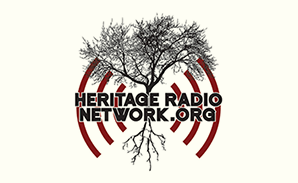Breast health is a topic that concerns millions of women around the world, and while breast cancer often takes center stage in discussions, other breast-related conditions deserve our attention too. One such condition is a breast cyst. In this article, we will delve into the world of breast cysts, shedding light on what they are, their causes, symptoms, diagnosis, and treatment options.
What is a Breast Cyst?
A breast cyst is a fluid-filled sac or pocket that can develop within the breast tissue. These cysts can vary in size, from as small as a pea to larger than a golf ball. They are a common occurrence among women, especially in those aged 35-50, and are not necessarily a cause for concern.
Causes of Breast Cysts
The exact cause of breast cysts is not fully understood. However, they are believed to result from hormonal changes in the body. Hormones like estrogen can lead to the development of cysts, which is why they are more common in premenopausal women. Some factors that may increase the risk of developing breast cysts include:
- Hormonal Fluctuations: As mentioned earlier, hormonal changes can trigger the development of breast cysts.
- Age: Women over 40 are more likely to develop breast cysts.
- Hormone Replacement Therapy: Women who undergo hormone replacement therapy may have a higher risk.
- Family History: A family history of breast cysts may increase the likelihood of developing them.
- Diet and Lifestyle: A diet high in caffeine and low in fruits and vegetables may be associated with an increased risk.
Symptoms of Breast Cysts
Breast cysts may not always cause noticeable symptoms, but when they do, common signs include:
- Lump in the Breast: A distinct lump that you can feel in the breast.
- Pain and Tenderness: The cyst may be painful or tender to the touch.
- Change in Size: The size of the cyst can change with the menstrual cycle.
- Breast Swelling: The affected breast may appear swollen or enlarged.
- Breast Discomfort: Some women report a feeling of fullness or heaviness in the breast.
Diagnosis and Evaluation
If you notice any of the symptoms mentioned above, it's essential to seek medical evaluation. To diagnose a breast cyst, your doctor may perform a combination of the following:
- Clinical Examination: A physical examination of the breast to feel for lumps or abnormalities.
- Imaging Tests: These may include a mammogram, ultrasound, or MRI to get a better view of the breast tissue.
- Fine Needle Aspiration (FNA): A procedure where a thin needle is used to drain fluid from the cyst. This fluid can then be analyzed to confirm the presence of a cyst and rule out any concerning features.
- Biopsy: In some cases, your doctor may recommend a biopsy to examine the cyst's tissue more closely.
Treatment Options
The treatment approach for breast cysts can vary depending on the symptoms, size, and characteristics of the cyst. Common treatment options include:
- Observation: If the cyst is small and not causing discomfort, your doctor may recommend simply monitoring it over time.
- Drainage: For larger or painful cysts, your doctor may perform fine needle aspiration (FNA) to remove the fluid from the cyst, which can provide immediate relief.
- Hormone Therapy: In some cases, hormonal therapy, such as birth control pills, may be recommended to prevent the formation of new cysts.
- Surgery: Surgical removal of the cyst may be necessary if it is large, painful, or causing concern due to its appearance or characteristics.
When to Seek Medical Attention
While breast cysts are generally benign, it's crucial to seek prompt medical attention if you notice any changes in your breast tissue. This is especially important if you experience:
- Persistent breast pain
- New or changing breast lumps
- Breast lumps that don't go away after your menstrual cycle
- Breast discharge that is bloody or clear
These symptoms may require further evaluation to rule out more serious conditions.
In Conclusion
Breast cysts are a common occurrence among women, and understanding their causes, symptoms, diagnosis, and treatment options is essential for overall breast health. While they are typically benign, it's vital to be vigilant about breast changes and seek medical advice when necessary. Regular breast self-exams and mammograms can help in early detection and ensure peace of mind when it comes to breast health. Remember, knowledge is power, and staying informed about your body is the first step to maintaining good health.























